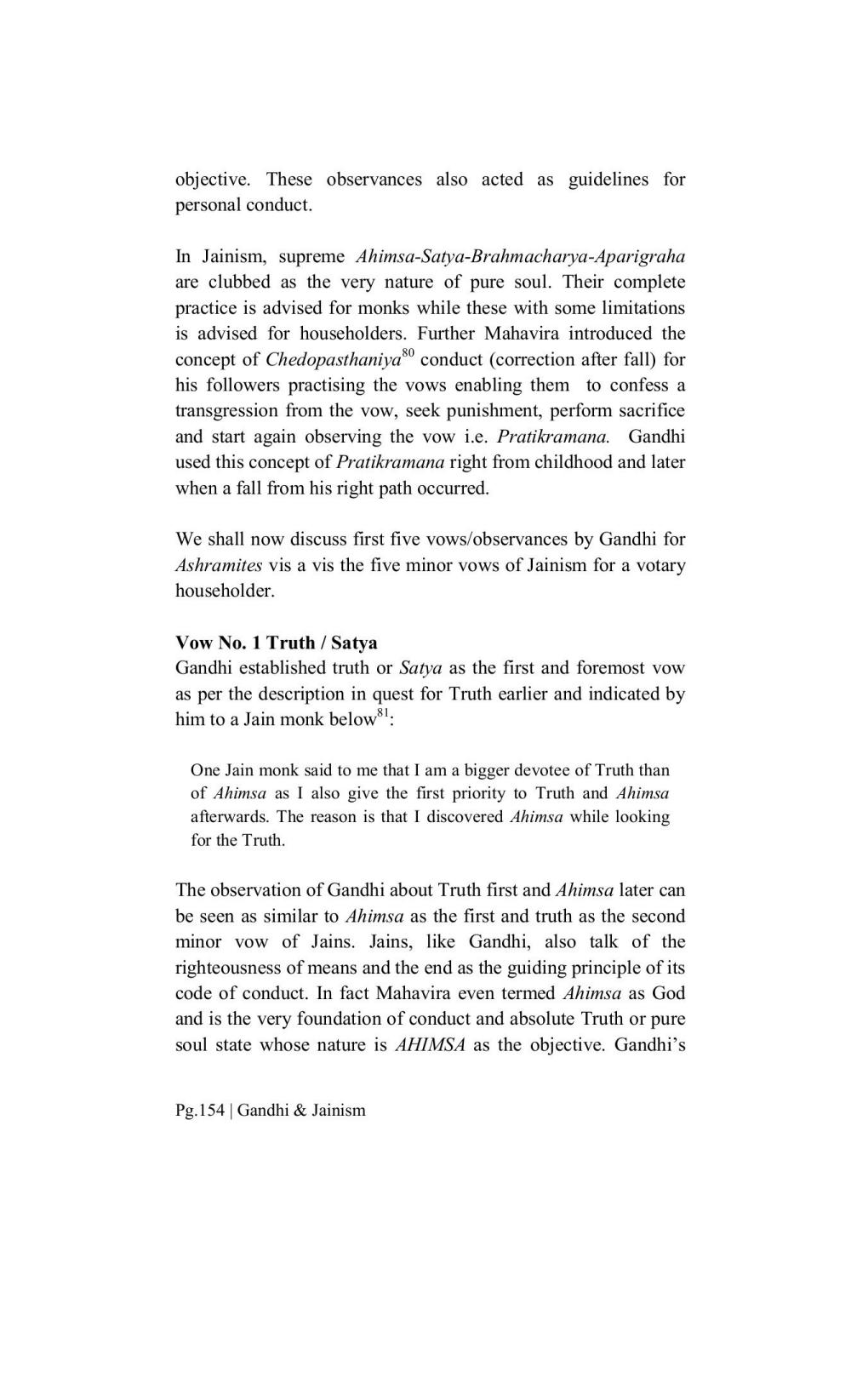________________
objective. These observances also acted as guidelines for personal conduct.
In Jainism, supreme Ahimsa-Satya-Brahmacharya-Aparigraha are clubbed as the very nature of pure soul. Their complete practice is advised for monks while these with some limitations is advised for householders. Further Mahavira introduced the concept of Chedopasthaniya" conduct (correction after fall) for his followers practising the vows enabling them to confess a transgression from the vow, seek punishment, perform sacrifice and start again observing the vow i.e. Pratikramana. Gandhi used this concept of Pratikramana right from childhood and later when a fall from his right path occurred.
We shall now discuss first five vows/observances by Gandhi for Ashramites vis a vis the five minor vows of Jainism for a votary householder.
Vow No. 1 Truth / Satya Gandhi established truth or Satya as the first and foremost vow as per the description in quest for Truth earlier and indicated by him to a Jain monk below:
One Jain monk said to me that I am a bigger devotee of Truth than of Ahimsa as I also give the first priority to Truth and Ahimsa afterwards. The reason is that I discovered Ahimsa while looking for the Truth.
The observation of Gandhi about Truth first and Ahimsa later can be seen as similar to Ahimsa as the first and truth as the second minor vow of Jains. Jains, like Gandhi, also talk of the righteousness of means and the end as the guiding principle of its code of conduct. In fact Mahavira even termed Ahimsa as God and is the very foundation of conduct and absolute Truth or pure soul state whose nature is AHIMSA as the objective. Gandhi's
Pg. 154 | Gandhi & Jainism




